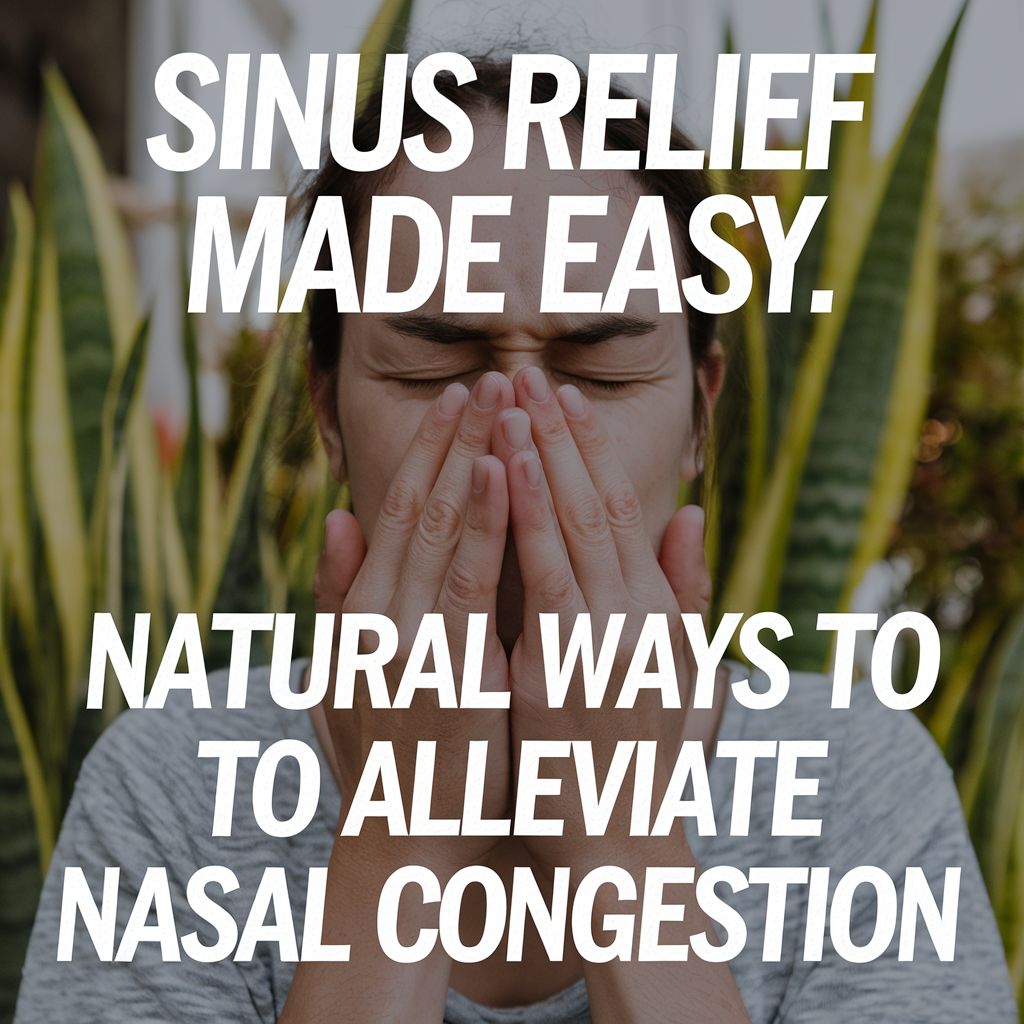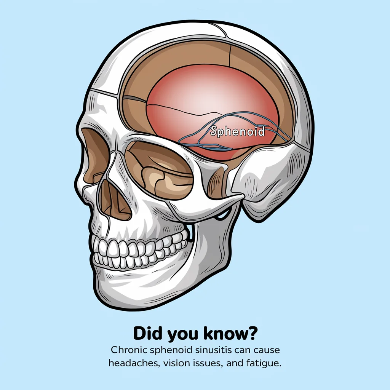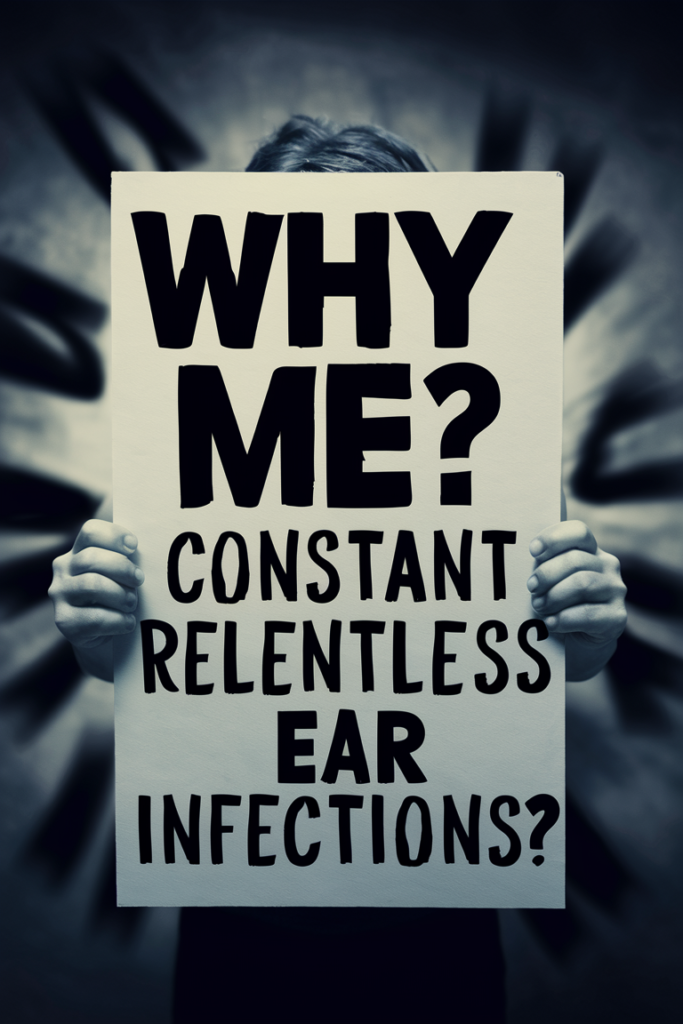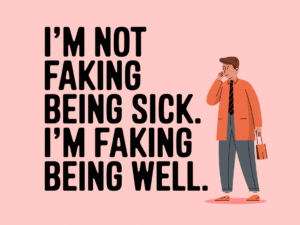
Deviated Septum and Concha Bullosa: My Struggle and Fix
Living With Sinus Issues That No One Took Seriously
For over five years, I felt like I was slowly losing my ability to function like a normal person. Every single day was a battle against burning pain in my forehead and eyes, sinus pressure that never let up, and dizziness so bad that I felt like I was constantly off balance.
At first, I thought it was just allergies. I tried every nasal spray, antihistamine, and home remedy I could find. Nothing worked. Some days were so bad that I’d wake up exhausted, my head pounding before I even got out of bed. Leaning forward made the pain worse, like my skull was being squeezed from the inside.
The dizziness was the worst part. I started avoiding situations where I had to bend over, climb stairs too fast, or even stand up too quickly. The vertigo made me feel like I was floating, disconnected from my own body. It wasn’t just annoying—it was terrifying.
I kept telling doctors about my symptoms, but they didn’t seem too concerned. They’d glance up from their notepads and tell me it was probably just allergies or stress. A couple of them gave me antibiotics, assuming it was a sinus infection, but they never helped. Every time I tried to explain that this wasn’t a normal kind of discomfort, I got the same answer:
“Your symptoms sound worse than what we see on scans. It’s probably mild inflammation. Try a nasal spray.”
Mild. That word haunted me. How could something “mild” make me feel so miserable every single day?
It wasn’t until I finally got a CT scan of my sinuses that I started to get real answers. And what I learned completely changed the way I thought about my own health.

What Is a Deviated Septum and Concha Bullosa?
When my CT scan results came back, I remember staring at the report and thinking, What does all this even mean? Words like “deviated septum,” “concha bullosa,” and “enlarged turbinates” sounded medical and confusing, but I was desperate to understand them. Once I dug into what they actually meant, things started to make sense.
Deviated Septum: The Hidden Blockage
The septum is the wall inside your nose that separates your left and right nostrils. In a perfect world, it’s straight, but for many people—including me—it’s not. My septum was crooked toward the left, making it hard to breathe through that side.
A deviated septum does more than just block airflow. It can cause:
- Constant nasal congestion on one side
- Sinus pressure from poor drainage
- Difficulty sleeping due to blocked airways
- Dizziness and fatigue due to poor oxygen intake
For me, the left nostril was practically useless. No matter how many nasal sprays I tried, I couldn’t get any relief. I was always congested, always tired, and always feeling like I was operating on half a tank of air.
Concha Bullosa: The Trouble-Making Air Pocket
Concha bullosa is basically a bubble of air trapped inside the nasal turbinates, the structures that warm and filter the air you breathe. My right turbinate had this air pocket, which meant it was larger than it should be and blocking airflow on that side too.
This air pocket doesn’t just make it hard to breathe. It can cause:
- Sinus pressure that won’t go away
- Headaches and burning pain in the forehead and eyes
- Worsening symptoms when leaning forward
- Nerve irritation that feels like burning or pressure
I always wondered why my forehead felt like it was on fire. Now I knew—the inflamed tissues and blocked airways were pressing on nearby nerves.
Enlarged Turbinates: Adding Fuel to the Fire
On top of the deviated septum and concha bullosa, I also had hyperplastic (enlarged) turbinates. These are the tissues inside your nose that swell when you’re sick or dealing with allergies, but mine seemed permanently swollen. This added another layer of blockage and made my nose bleed whenever I used certain nasal sprays.
Enlarged turbinates can cause:
- Dryness and irritation, leading to nosebleeds
- Difficulty breathing even when you’re not congested
- Worsened sinus pressure and fatigue
This combination—deviated septum, concha bullosa, and enlarged turbinates—was like a perfect storm of misery. And yet, doctors kept calling it “mild.” But trust me, when you can’t breathe, when your head feels like it’s on fire, and when you’re dizzy all the time, nothing about it feels mild. I knew I needed real answers and solutions.

Symptoms of a Deviated Septum and Concha Bullosa
Before I knew what was actually wrong, I just knew I felt awful every single day. It wasn’t just a little sinus congestion or occasional discomfort—it was a constant, exhausting struggle that completely controlled my life.
At first, I thought maybe I had chronic sinus infections or severe allergies, but nothing helped. Over time, I started to realize that my symptoms weren’t random. They were directly connected to how my nasal passages were structured.
Common Symptoms of a Deviated Septum and Concha Bullosa
If you’re dealing with sinus pressure, dizziness, and chronic nasal congestion, you might have similar issues. Here’s what I experienced:
- Constant nasal congestion – One nostril was always blocked, especially at night
- Burning pain in my forehead and eyes – Felt like my head was on fire
- Sinus pressure that never let up – Worse when bending forward
- Dizziness and vertigo – Made me feel off-balance all the time
- Brain fog and exhaustion – Breathing poorly affected my energy levels
- Frequent headaches – Mostly around my forehead and between my eyes
- Nosebleeds – Certain nasal sprays made it worse
- Post-nasal drip and throat irritation – Mucus constantly dripping down my throat
For me, the dizziness was one of the worst symptoms. I never connected poor nasal airflow with balance problems, but it turns out that when your sinuses are inflamed, they can put pressure on the areas around your inner ear, which affects balance. Some days, I felt like I was walking on a boat.
The Symptoms Were Worse Than What My CT Scan Showed
One of the most frustrating things was that my CT scan didn’t look as bad as I felt. The report said I had “mild” issues, but I knew my suffering wasn’t mild.
I learned that even small structural problems in the wrong spot can cause big symptoms. A deviated septum, a concha bullosa, and swollen turbinates might not seem like a huge deal on paper, but when they block airflow and trap pressure in your head, they can make your daily life miserable.
If you’ve been dealing with constant sinus issues, and doctors are brushing you off because your scans don’t look “severe,” don’t ignore it. Your symptoms matter more than a piece of paper. Keep pushing for answers, because you don’t have to live like this forever.

How a Deviated Septum and Concha Bullosa Can Ruin Your Life
At first, I thought I was just dealing with a stubborn cold or bad allergies. I never imagined that something as “mild” as a deviated septum and concha bullosa could turn into a never-ending cycle of pain, exhaustion, and frustration. But over time, I realized how much these nasal issues were affecting every part of my life.
Breathing Problems That Never Went Away
Breathing is something you’re not supposed to think about—it just happens. But for me, it was a constant struggle. I could never get a full, deep breath through my nose.
- If I tried to breathe through my left nostril, nothing happened.
- If I tried to breathe through my right, it was partially blocked by my concha bullosa.
- At night, I was forced to breathe through my mouth, which led to dry throat, snoring, and terrible sleep.
I used to wake up feeling just as exhausted as when I went to bed. No matter how many hours I slept, it never felt like enough. It reminded me of the time I struggled with post-nasal drip and constant sickness, which only made everything worse. If you’ve ever had chronic congestion and drainage, you know how frustrating it can be (read my experience with post-nasal drip here).
Constant Sinus Pressure and Pain
The burning pain in my forehead and around my eyes wasn’t just annoying—it was constant. Some days, it felt like someone had lit a fire inside my skull. Other times, the pressure built up so much that I felt like my head was going to explode if I leaned forward.
At one point, I wondered if a simple therapeutic bath for sinus relief might help. Steam and warmth did provide temporary relief, but it wasn’t enough to fix the root cause. If you’re struggling with sinus issues, trying a steam bath might be worth it (check out my experience with sinus relief baths).
Dizziness and Brain Fog That Made Life Miserable
The dizziness was one of the worst parts. I never expected a nasal issue to cause vertigo, but it did. Some days, I felt like I was swaying even when I was standing still.
- Simple tasks like bending over or looking down made me lightheaded.
- Walking too fast or climbing stairs made me feel off-balance.
- Even sitting still, I sometimes felt like the room was subtly spinning.
I started researching what could cause dizziness and balance issues related to breathing difficulties. One thing I found was that air conditioning can trigger sinus symptoms and make dizziness worse, especially if you already have a deviated septum or sinus inflammation (learn more about air conditioning allergies and sinus issues).
When Even Medications Didn’t Help
Like most people, I tried nasal sprays, allergy medications, and decongestants, hoping for some relief. Some worked for a day or two, but the congestion always came back.
- Flonase and other steroid sprays only irritated my nose and made it bleed.
- Antihistamines helped a little but never fully cleared my sinuses.
- Decongestants dried me out but didn’t fix the pressure issue.
I wanted to believe Flonase could help my sinus inflammation, but in my case, it didn’t do much (if you’re curious about Flonase for sinus issues, here’s a deep dive).
The truth was, no amount of medication was going to straighten my deviated septum, shrink my concha bullosa, or fix my enlarged turbinates. I had to start looking into long-term solutions—and that meant considering surgery.

Diagnosis: Getting a CT Scan and Understanding the Results
After years of frustration, I finally convinced a doctor to order a CT scan of my sinuses. I thought, Finally, I’ll have proof that something is seriously wrong! But when I got the results, I was more confused than ever.
The Moment I Read “Mild” and Felt Defeated
The report listed a bunch of technical terms: deviated septum, concha bullosa, mild mucosal thickening, and narrowed sinus drainage pathways. But the word that stuck out was “mild.”
Mild? How could they call this mild when I was suffering every single day?
Doctors tend to focus on whether there’s a full blockage or a visible infection, but structural issues don’t always look bad on a scan, even when they cause major symptoms. This is why so many people with chronic sinus pressure and dizziness get dismissed when they try to explain how miserable they feel.
If you’re struggling to breathe or dealing with constant sinus infections, a CT scan might not always show the full picture. Many people with chronic sphenoid sinus infections go undiagnosed for years (read more about chronic sinus infections and how they’re diagnosed).
What My CT Scan Actually Showed
Even though doctors weren’t alarmed by my results, I knew these findings explained why I felt awful all the time:
- Deviated septum (left side) – Blocking airflow and causing constant congestion.
- Concha bullosa (right side) – An air pocket in my turbinate, making my sinus pressure worse.
- Hyperplastic (enlarged) turbinates – Swollen tissues that made it even harder to breathe.
- Mild sinus inflammation – Enough to keep me feeling stuffy, but not bad enough to be called a full-blown infection.
- Narrowed drainage pathways – Meaning my sinuses weren’t clearing mucus properly, leading to trapped pressure and pain.
Even if my scan didn’t scream “severe,” my symptoms told a different story. That’s why it’s so important to listen to your own body—because sometimes, the scan doesn’t show how bad things really are.
Why CT Scans Don’t Always Match Symptoms
Many people with deviated septums, enlarged turbinates, and sinus inflammation experience:
- Severe sinus pressure and pain, even with mild findings on a scan.
- Burning sensations in the forehead and eyes from nerve irritation.
- Constant dizziness and brain fog due to poor airflow and oxygen intake.
- Exhaustion from never being able to breathe properly.
I started looking into people who had gone through deviated septum surgery and whether it actually made a difference. Turns out, many people experience major improvements after surgery (here’s what to expect if you’re considering deviated septum surgery).
At this point, I knew my next step. Medications weren’t helping. Lifestyle changes weren’t enough. I needed to talk to an ENT about surgical options that could actually fix the root of the problem.

Treatment Options: Non-Surgical and Surgical Fixes
Once I understood that my deviated septum, concha bullosa, and enlarged turbinates were making my life miserable, I had to figure out what to do next. I wasn’t thrilled about the idea of surgery, but I also didn’t want to keep living like this. I started researching both non-surgical treatments and surgical options to see what actually worked.
Non-Surgical Approaches: What Helped (and What Didn’t)
Before considering surgery, I tried every possible natural remedy and medical treatment to see if I could get some relief. Some things helped a little, but nothing completely fixed the issue.
1. Saline Rinses and Nasal Irrigation
- Using a neti pot or saline rinse helped clear mucus buildup and temporarily reduced pressure.
- While it felt good for a little while, the congestion always came back.
- This is a great option for short-term relief, but it won’t fix a deviated septum or concha bullosa.
- If you struggle with chronic sinus congestion, natural remedies like saline rinses can help (check out more natural sinus relief options here).
2. Nasal Sprays (Flonase and Other Steroids)
- I was hopeful that Flonase would help shrink my swollen turbinates, but it only irritated my nose and caused nosebleeds.
- Some people find relief with steroid sprays, but in my case, they didn’t work.
- If you’re considering Flonase for allergies or sinus inflammation, it’s worth understanding how it works first (read more about Flonase and sinus issues here).
3. Antihistamines and Allergy Management
- I tried Zyrtec, Allegra, and Claritin, thinking allergies might be the issue.
- These meds helped a little but didn’t fix the underlying structural problem.
- If you’re suffering from sinus issues triggered by allergens, managing airborne irritants and allergy exposure might be key (here’s how air conditioning can make allergies worse).
4. Humidifiers and Steam Therapy
- Adding a humidifier to my bedroom helped prevent my nose from drying out overnight.
- Steam therapy (breathing in hot shower steam) temporarily relieved sinus pressure.
- Again, helpful but not a permanent fix—especially for something like a deviated septum.
- If you’re looking for a natural way to soothe sinus pain, heat and steam can help (here’s my experience using therapeutic baths for sinus relief).
When Non-Surgical Options Aren’t Enough
After months of trying everything, I came to one painful realization:
Nothing was going to “fix” my deviated septum, concha bullosa, or enlarged turbinates unless I physically changed the structure of my nose.
That’s when I knew I had to consider sinus surgery.
Surgical Options: What Actually Fixes the Problem
If your symptoms are as bad as mine were, and non-surgical treatments aren’t enough, surgery might be the best option. Here’s what I learned about the most common procedures:
1. Septoplasty (Fixing the Deviated Septum)
- Straightens the nasal septum, allowing proper airflow.
- Can drastically improve breathing, sleep, and sinus drainage.
- Not cosmetic—this is purely a functional surgery to help with breathing.
2. Turbinate Reduction (Shrinking Enlarged Turbinates)
- Reduces the size of swollen turbinates, making breathing easier.
- Often done alongside a septoplasty to maximize airflow improvement.
3. Concha Bullosa Removal
- Removes the trapped air pocket inside the turbinate.
- Helps relieve sinus pressure and headaches.
- Can make a big difference in nasal congestion and overall comfort.
Many people are hesitant about surgery, but if you’ve been suffering for years with blocked sinuses, breathing issues, and chronic dizziness, it’s worth considering. I did a deep dive into what to expect before and after deviated septum surgery (here’s a guide to the costs and process).
The Decision to Get Surgery
After struggling for years, I finally made the decision to go through with sinus surgery. I knew it wasn’t going to be an overnight fix, but I was tired of being miserable all the time.
The recovery wasn’t easy, but it was worth it. If you’re thinking about sinus surgery, it’s important to know what to expect during healing and swelling (check out my experience with post-surgery recovery here).
For me, it was one of the best decisions I’ve ever made. But surgery isn’t the only path—some people can manage their symptoms without it. The key is knowing when it’s time to stop trying temporary fixes and start looking at long-term solutions.

Life After Surgery: Was It Worth It?
Making the decision to go through sinus surgery wasn’t easy. I had spent years trying to avoid it, hoping that something else—anything else—would fix my symptoms. But after exhausting every nasal spray, allergy pill, humidifier, and home remedy out there, I finally realized I had two choices:
- Keep suffering with constant sinus pressure, dizziness, and miserable breathing.
- Take the leap and fix the problem at its source.
So, I went for it. And looking back now, I can say it was absolutely worth it.
What Changed After Surgery?
I’ll be honest—the first few weeks of recovery weren’t fun. There was swelling, congestion, and discomfort, but nothing compared to what I had already been dealing with for years. Once the healing process kicked in, I started noticing real improvements.
Here’s what changed for me after surgery:
- I could finally breathe through both nostrils for the first time in years.
- My sinus pressure disappeared—no more feeling like my head was about to explode when I leaned forward.
- The burning pain in my forehead and eyes was gone.
- Dizziness and brain fog drastically improved.
- I was sleeping better since I wasn’t waking up congested.
- No more constant fatigue from struggling to get enough oxygen.
It wasn’t an instant fix, but as the weeks went by, I kept feeling better and better. If you’re considering this surgery, knowing what to expect afterward is key—there are ways to speed up recovery and minimize discomfort (here’s what helped me heal after surgery).
What Didn’t Change?
While the surgery solved most of my problems, there were a few things that still required ongoing management:
- Seasonal allergies still triggered some mild congestion, but nothing like before.
- I still use a humidifier at night to keep my nasal passages from drying out.
- Post-nasal drip still happens occasionally, especially when the air is dry.
Even though my nose still requires some maintenance, the difference is night and day. I went from feeling miserable every single day to living a normal, functional life again.
Is Sinus Surgery Right for You?
If you’ve been dealing with chronic nasal congestion, sinus pressure, dizziness, or breathing difficulties, and nothing else is helping, it might be time to talk to an ENT about surgery. Here are some signs that it could be a good option:
- You’ve tried medications, nasal sprays, and natural remedies with no lasting relief.
- You constantly feel blocked up, no matter what you do.
- Sinus pressure, headaches, or dizziness are affecting your quality of life.
- Your CT scan shows a deviated septum, concha bullosa, or enlarged turbinates.
For me, surgery wasn’t just about fixing my nose—it was about getting my life back. If you’re considering it, make sure you understand the full process, including the costs and what to expect (check out this guide to deviated septum surgery).
Final Thoughts: You Don’t Have to Keep Suffering
For five long years, I felt like a prisoner in my own body. I woke up every day dreading the burning pain, sinus pressure, and dizziness that never seemed to go away. And the worst part? Doctors kept telling me it was “mild”—but it never felt mild to me.
If you’re in the same situation, don’t give up. Keep pushing for answers, keep advocating for yourself, and if surgery is the right choice, don’t be afraid to take that step.
It’s easy to feel like you’re alone in this, but you’re not. So many people suffer from chronic sinus issues and struggle to get doctors to take them seriously. If that’s you, trust your instincts—you know your body better than anyone else.
And if you’re looking for more ways to breathe better and manage sinus issues naturally, check out this guide on natural remedies for sinus congestion.
You don’t have to live like this forever. There is hope, and there is relief.
As an Amazon Associate we earn from qualifying purchases through some links in our articles.




